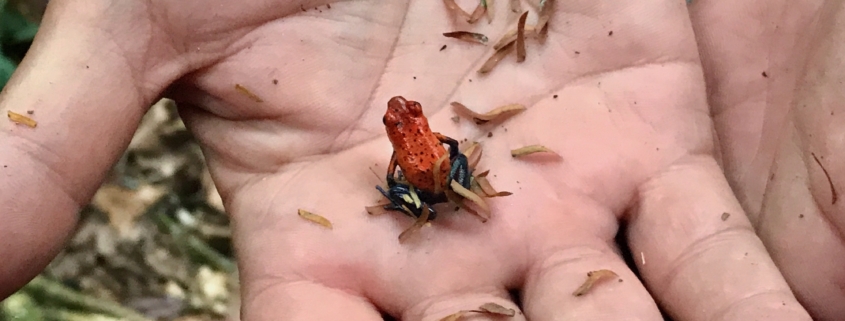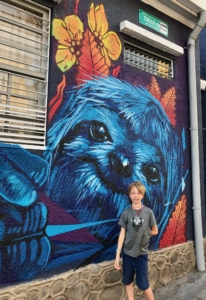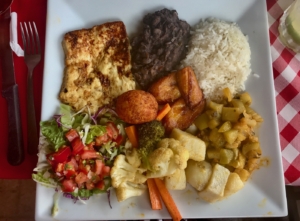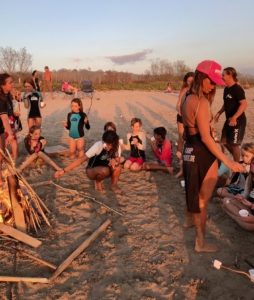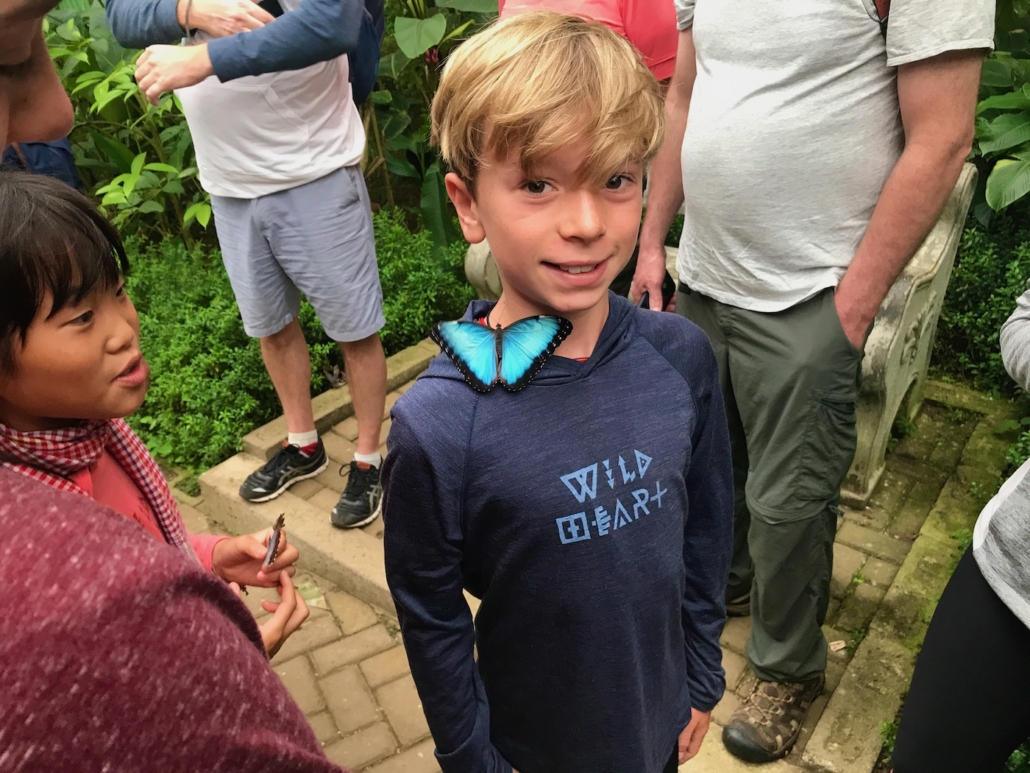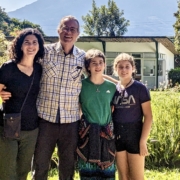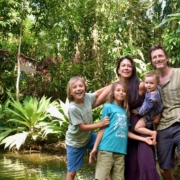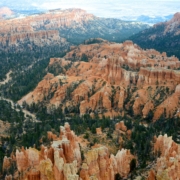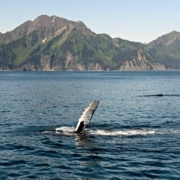Destination Inspiration: Costa Rica
Costa Rica, as the name implies, has so much richness to offer the family traveler: volcanoes, sloths, river rafting, a vibrant capital, Pacific waves, Caribbean calm, delicious food and worldschooling opportunities raining down from the awe-inspiring cloud forests. This post shares our reasons to visit Costa Rica.
I first visited Costa Rica as an undergrad researching public/private partnerships for my senior thesis and used Manuel Antonio National Park as one of my case studies. Little did I know how much fun that project would be and the lifelong connection it would create. Much later, my husband worked for Whole Foods Market and their partnership with Earth University brought us down several times to visit this global sustainable agriculture mecca. So, Costa Rica was an obvious choice for a two-month stay while worldschooling our family.
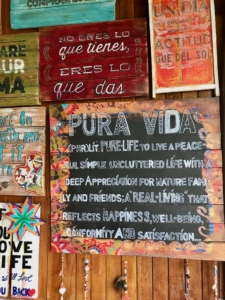 Costa Rica’s values of peace and happiness pervade the country. The county’s mantra is “Pura Vida,” which doesn’t translate well to English but roughly means “the good life.” It can also mean the pure or simple life. It is used as a greeting the same way you might hear people saying “ciao” in Italy or “aloha” in Hawaii. It can mean hello and goodbye, thanks and okay. From my experience, the repetition of “Pura Vida” does something to its population. Ticos remind each other what is important, what is valued. Costa Rica is one of a handful of countries in the world without a military. It was disbanded in 1949, although there are police to protect its people from within. Home to both Earth University and the UN’s University for Peace, Costa Rican “good life” value is peace through safety for all.
Costa Rica’s values of peace and happiness pervade the country. The county’s mantra is “Pura Vida,” which doesn’t translate well to English but roughly means “the good life.” It can also mean the pure or simple life. It is used as a greeting the same way you might hear people saying “ciao” in Italy or “aloha” in Hawaii. It can mean hello and goodbye, thanks and okay. From my experience, the repetition of “Pura Vida” does something to its population. Ticos remind each other what is important, what is valued. Costa Rica is one of a handful of countries in the world without a military. It was disbanded in 1949, although there are police to protect its people from within. Home to both Earth University and the UN’s University for Peace, Costa Rican “good life” value is peace through safety for all.
Kids might notice some ingredients in Costa Rican food that are similar to Mexican food, to which many American kids’ palates are accustomed…with a few differences. Black beans are usually used over pinto and fried plantains and coconut are a mainstay. Food can be pricey in tourist areas, but you can usually find traditional dishes on the menu for much more reasonable prices. Gallo Pinto, or beans and rice, is a national dish and available for breakfast, lunch and dinner. Casado is another traditional dish. Casado literally means “married,” and the dish consists of small amounts of many things that are married together on your plate. There’s beans, rice, meat, tortillas, fried plantain, and green salad. For vegetarians, the meat is usually substituted for a deep-fried soft cheese. Yum! Fresh fruit, smoothies and juices are everywhere. Costa Rica’s Nicoya peninsula is a Blue Zone, one of seven places on the planet with the largest number of centenarians. They’re doing something right.
With a large expat community in the suburbs of San Jose and many coastal communities, reliable healthcare is abundant. Aside from bumpy roads, the infrastructure of utilities, health codes, recycling and national parks feels solid. There’s political safety relative to other Central American countries. From my experience, boats have life jackets, ziplines offer helmets, taxis/Ubers have seatbelts. And many families, including us, felt comfortable renting cars and driving ourselves to remote areas.
Costa Rica has many Spanish language immersion programs around the country and especially in the touristed areas. You can also count on day camps and alternative schools that accept worldschooling families both short- and long-term. My oldest daughter and husband did a daily Spanish immersion course and my two younger kids spent many weeks at a half-day Spanish and surf camp where they interacted with other worldschooling families. Both of those programs gave us a community and social connections that have lasted years.
A love for the environment and a commitment to its preservation are also central to the Tico way of life. The national parks, the language and images on murals, the sanctuaries, and pristine forests and beaches will inspire interaction with the natural world for your whole family. You could base your worldschooling on howler monkeys or sea turtles, cloud forests or volcanoes: it’s all there and accessible. Lessons on preservation and sustainable agriculture are visible just by traversing this beautiful country.
Costa Rica is more expensive than its neighbors like Guatemala, Nicaragua, or Panama. I believe it’s for all the reasons above, plus a healthy economy and strong, relatively stable currency. There are also areas that are heavily expat, like Nosara, Tamarindo or Arenal, places where Ticos prefer to be paid in dollars, everything is in English and you can, for better or worse, get a quinoa superfood salad with your oat milk latte on your way to aerial yoga or Crossfit. Some might ask, why leave home? Well, it’s nice to get an oat milk latte sometimes. Familiarity can offer a welcome break. But if that’s not what you’re looking for, there are plenty of gems without the crowds.
So, spend some time in this Central American gem to let some of the Pura Vida rub off on you.

